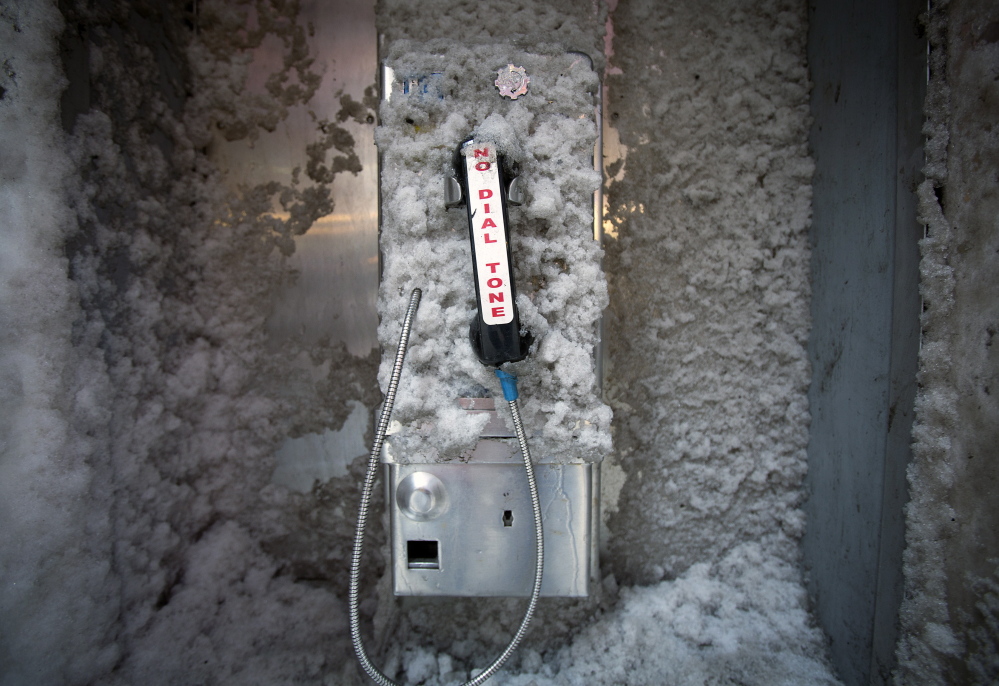There are few pieces of infrastructure in any city more iconic than the pay phone. Clark Kent used it. So did Colin Farrell. And Bill. And Ted. The pay phone has been a time travel machine and a safe haven and a comedic device.
It has not, however, for a very long time – for most of us – been used to make phone calls.
For that reason, cities have been trying to figure out what to do with these outdated assets, and how to reimagine them as telecom infrastructure for a modern era when most of us have our own cell phones. Now New York has unveiled the most ambitious plan yet for the pay phone of the future, which will, among things, require no pay to make domestic phones calls, and function as much more than a phone.
The city announced Monday that it had selected a consortium of advertising, technology and telecom companies to deploy throughout the city thousands of modern-day pay phones that will offer 24-hour, free gigabit WiFi connections, free calls to anywhere in the U.S., touchscreen displays with direct access to city services, maps and directions for tourists and charging stations (for the cellphones you’d rather use). The devices will also be capable of connecting people straight to emergency responders, and broadcasting alerts from the city during emergencies like Hurricane Sandy.
The system, city officials said, will constitute the world’s largest free municipal WiFi network.
All of it will be funded by what the providers say will be an astonishingly large revenue stream from sophisticated digital advertising – picture different and constantly fine-tuned ads depending on the block – that’s projected to generate for the city $500 million over the next 12 years. Scott Goldsmith, the chief commercial officer at the advertising company Titan working on the contract, says the infrastructure will “revolutionize how advertising is delivered in the biggest media market in the world.” Fifty percent of that revenue will go to the city.
The end product, by the way, will no longer be called a “pay phone.” The city is calling the new devices “links.”
The consortium, called CityBridge, also includes the telecom giant Qualcomm, New York-based user experience design firm Control Group, and the hardware company Comark. Their contract with the city, which will replace New York’s previous 15-year contract to maintain and operate public pay phones, calls for construction of the network to begin in 2015. Ultimately, as many as 10,000 of the machines will be installed across New York, replacing roughly 6,500 old-school pay phones.
The city hopes to make money auctioning off some of the old pay phones, which may retain some sentimental value, if not much functional allure. The new contract also calls for preserving three original Superman-style phone booths on the Upper West Side – as, yes, operational phones – for posterity.
For the last two years, New York has run a series of programs, including a WiFi hotspot pilot and a design contest, to generate ideas for the formal proposal request that went out earlier this year. New Yorkers pitched pay phones as public art displays, as emergency beacons, as benches, as city service kiosks. The product unveiled Monday contains quite a lot of these ideas (OK, not the bench).
Now LinkNYC will further usher in the brave new world of “smart cities,” where individual pieces of infrastructure are networked together and linked to emergency management, city services, advertising and, potentially, law enforcement. That will make for better services for residents, but also potentially more concerns about privacy. The city acknowledged Monday that law enforcement agencies in an investigation could legally request data from the link operators.
Send questions/comments to the editors.



Success. Please wait for the page to reload. If the page does not reload within 5 seconds, please refresh the page.
Enter your email and password to access comments.
Hi, to comment on stories you must . This profile is in addition to your subscription and website login.
Already have a commenting profile? .
Invalid username/password.
Please check your email to confirm and complete your registration.
Only subscribers are eligible to post comments. Please subscribe or login first for digital access. Here’s why.
Use the form below to reset your password. When you've submitted your account email, we will send an email with a reset code.